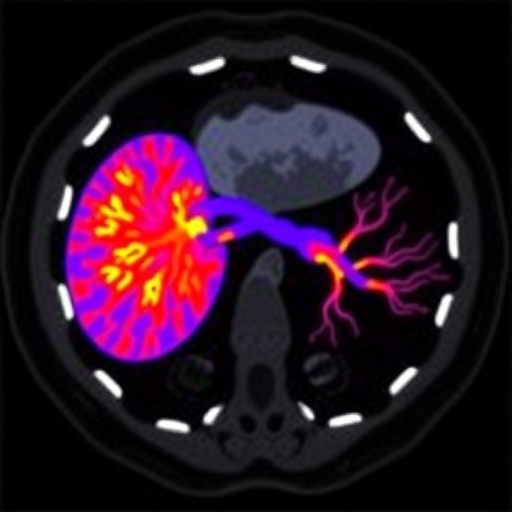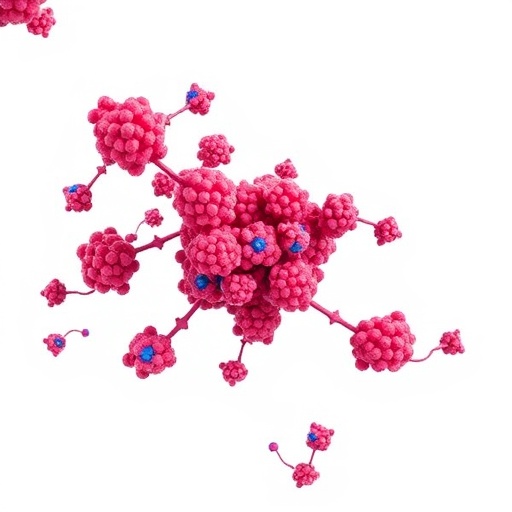In the evolving field of nuclear medicine, precise imaging is critical for diagnosing and managing abdominal malignancies. A recent study published in BMC Cancer sheds light on a phenomenon that has perplexed clinicians and radiologists alike: the non-specific uptake (NSU) of ^68Ga-FAPI in the pancreas. This retrospective, single-center investigation unveils important insights into factors influencing these ambiguous imaging findings, offering a path to improved diagnostic clarity.
^68Ga-FAPI PET/CT has emerged as a powerful tool in oncologic imaging, targeting fibroblast activation protein (FAP), which is overexpressed in tumor stroma. However, the pancreas frequently exhibits non-specific uptake of this tracer, complicating image interpretation and raising concerns about potential misdiagnoses. Distinguishing between pathological and benign uptake patterns remains a significant challenge that impacts patient management.
The study rigorously analyzed 122 patients who underwent ^68Ga-FAPI PET/CT for staging or restaging of abdominal cancers. Importantly, individuals with any clinical signs of pancreatitis or pancreatic tumors were excluded, ensuring a focus on non-specific tracer uptake unrelated to evident pancreatic disease. This careful selection bolstered the study’s validity in isolating the variables associated with NSU.
Researchers divided participants into two cohorts based on the presence or absence of pancreatic NSU. Among these, 42 patients exhibited NSU, while 80 showed no such uptake. Quantitative PET metrics revealed a striking difference: the average maximum standardized uptake value (SUVmax) was nearly four times higher in the NSU group compared to controls, starkly highlighting the imaging discrepancy attributable to factors other than malignancy.
To identify potential predictors of pancreatic NSU, the study applied both univariate and multivariate regression analyses, linking clinical and laboratory parameters to imaging outcomes. The analysis pinpointed three independent risk factors: diabetes mellitus, hematocrit levels, and C-reactive protein (CRP). Each of these plays a plausible biological role, engaging with pancreatic physiology and inflammation pathways, potentially modulating tracer uptake.
Diabetes emerged as the strongest predictor, with an odds ratio of nearly 7, suggesting patients with diabetes are substantially more prone to demonstrating NSU on ^68Ga-FAPI PET/CT. This association invites speculation around diabetes-induced pancreatic microenvironment changes, such as low-grade inflammation or fibrosis, which may augment FAP expression or alter tracer dynamics.
Hematocrit levels exhibited an inverse relationship with NSU, indicating that lower red blood cell concentrations may predispose to increased non-specific tracer accumulation. This finding aligns with the hypothesis that changes in blood viscosity or tissue oxygenation might influence radiotracer distribution or retention, though the exact mechanisms warrant deeper investigation.
Elevated CRP, a well-known systemic inflammatory marker, also correlated positively with pancreatic NSU. This link underscores the role of inflammatory processes in modulating FAPI uptake, as inflammation can promote fibroblast activation, leading to enhanced tracer binding. A precise cut-off value for CRP was established through ROC curve analysis, facilitating clinical decision-making.
The predictive power of hematocrit and CRP thresholds was validated using receiver operating characteristic (ROC) curve analysis, which defined optimal values of 37.5 and 17.85 respectively. These benchmarks provide a quantitative framework to evaluate patients’ risk of NSU, with potential implications for refining PET/CT interpretation protocols and minimizing false-positive diagnoses.
From a clinical perspective, these insights carry profound significance. Pancreatic NSU can simulate malignancy or inflammatory lesions on imaging, provoking unnecessary biopsies, additional testing, or overtreatment. Awareness of the risk factors identified enables nuclear medicine physicians and radiologists to contextualize pancreatic uptake findings more accurately, avoiding misinterpretations that could burden patients and healthcare systems.
This study also highlights the complexity inherent in interpreting FAPI PET/CT signals, especially in organs like the pancreas, where physiological and pathological processes intertwine subtly. It accentuates the necessity of integrating clinical data with imaging findings, fostering a multidisciplinary approach to optimize diagnostic accuracy.
Future research avenues emerge from these findings, inviting exploration into the precise biological mechanisms linking diabetes, hematocrit, and inflammation with FAPI tracer uptake. Animal models and molecular studies could unravel how pancreatic microenvironment alterations induce fibroblast activation protein expression independent of neoplastic processes.
Moreover, longitudinal studies could elucidate whether pancreatic NSU patterns fluctuate with disease progression or treatment, potentially serving as biomarkers for systemic inflammatory or metabolic status rather than just tumor detection. Such advancements would enhance the functional imaging repertoire, expanding beyond oncology into metabolic and inflammatory disease monitoring.
Innovations in tracer design might also be spurred by these findings, motivating the development of more selective ligands or imaging protocols that discriminate between specific tumor-associated fibroblast activity and benign inflammatory or metabolic changes. Enhancing the specificity of FAPI PET/CT would deepen its clinical utility and confidence in diverse patient populations.
The authors prudently emphasize the need for clinical vigilance when interpreting pancreatic uptake on ^68Ga-FAPI PET/CT scans, advocating consideration of patients’ diabetic status, hematologic parameters, and systemic inflammation markers. This integrative approach reflects precision medicine principles, tailoring diagnostic workflows to individual patient contexts.
In summary, this investigative report expands our comprehension of non-specific pancreatic tracer uptake and its clinical determinants, representing a critical step toward nuanced and accurate imaging interpretations in pancreatic and abdominal oncology. The study’s findings promise to refine diagnostic algorithms, improving outcomes through avoidance of diagnostic pitfalls.
Encouragingly, the clear quantification of hematocrit and CRP thresholds affords tangible tools for practitioners, bridging radiologic observations with laboratory biomarkers. Combined with patient history, these parameters equip clinicians to discern benign physiological variations from clinically significant abnormalities.
The significance of diabetes as a potent predictor of NSU further alerts healthcare providers to the metabolic influences on imaging, suggesting that comprehensive patient metabolic profiling should be incorporated when evaluating ambiguous scans. Such holistic assessment aligns with broader trends in medical imaging and disease management.
Ultimately, this study exemplifies the synergistic potential of combining advanced imaging technologies with rigorous clinical data analysis, underscoring that precision in cancer diagnostics hinges not only on cutting-edge technologies but also on a deep understanding of patient-specific biological factors.
As ^68Ga-FAPI PET/CT continues to gain traction worldwide, such research forms the foundation for its successful integration into routine clinical practice. At the intersection of molecular imaging and clinical medicine, these insights illuminate pathways to more effective, personalized, and accurate cancer care.
Subject of Research: Analysis of non-specific ^68Ga-FAPI uptake in the pancreas and identification of independent risk factors influencing its presence in PET/CT imaging.
Article Title: Non-specific uptake of ^68Ga-FAPI PET/CT in the pancreas and its related factor: a retrospective, single-center study
Article References: Xiao, L., Yang, L., Li, L. et al. Non-specific uptake of ^68Ga-FAPI PET/CT in the pancreas and its related factor: a retrospective, single-center study. BMC Cancer 25, 1479 (2025). https://doi.org/10.1186/s12885-025-14736-2
Image Credits: Scienmag.com
DOI: https://doi.org/10.1186/s12885-025-14736-2
Tags: 68Ga-FAPI PET/CT imagingabdominal malignancies diagnosisdiagnostic clarity in imagingdistinguishing benign and pathological uptakefactors influencing imaging findingsfibroblast activation protein targetingimplications for radiology and oncology.nuclear medicine advancementsoncologic imaging challengesPancreatic non-specific uptakepatient management in oncologyretrospective study on pancreatic uptake





